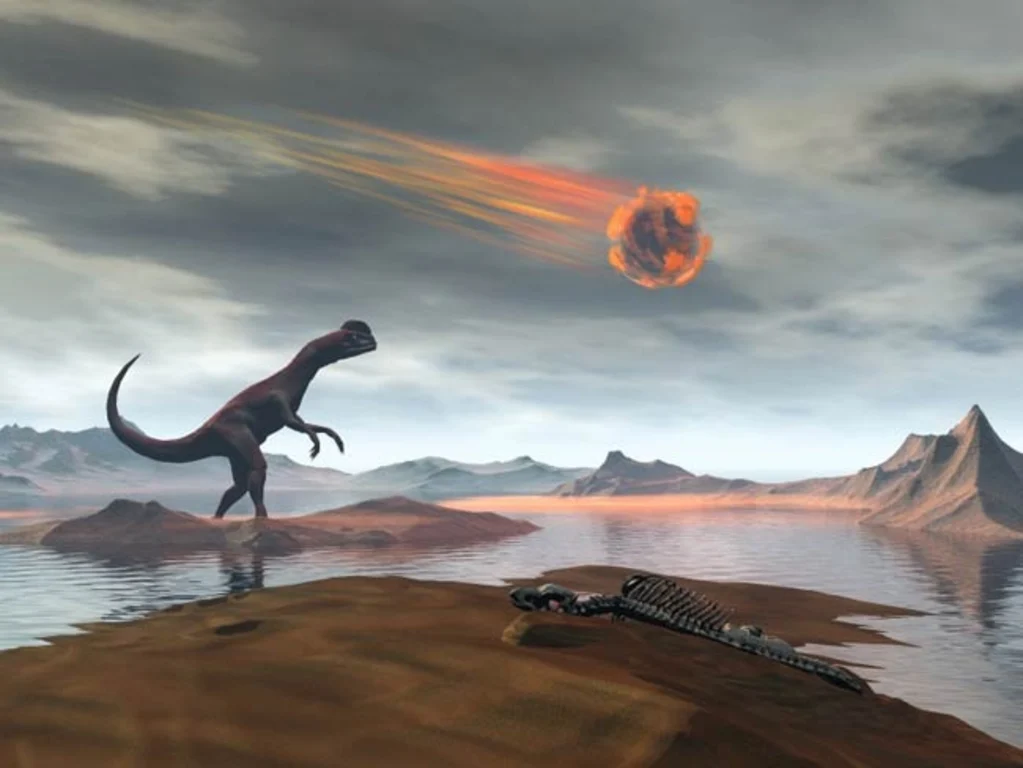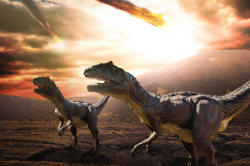Dinosaurs Extinct
 Geologically
speaking, the extinction of non-avian dinosaurs occurred 66 million
years ago, coinciding with the impact of a huge bolide, or comet or
asteroid, amid a period of intense volcanic activity, temperature
fluctuations, and sea level fluctuations. Six new dinosaur sites have
been discovered in coastal and non-marine layers of the Tremp Formation
and Arén (south-central Pyrenees, Huesca, Spain) around the
Cretaceous/Tertiary border. The sites include articulated remains (skull
elements, vertebrae, hindlimb bones), isolated hadrosaurid teeth and
bones, three different theropod tooth types, one sauropod, at least
seven different kinds of eggshells (six different kinds of ornithoid and
one Megaloolithidae type that is most likely from a sauropod), other
vertebrate remains, and four different species of charophyte.
Geologically
speaking, the extinction of non-avian dinosaurs occurred 66 million
years ago, coinciding with the impact of a huge bolide, or comet or
asteroid, amid a period of intense volcanic activity, temperature
fluctuations, and sea level fluctuations. Six new dinosaur sites have
been discovered in coastal and non-marine layers of the Tremp Formation
and Arén (south-central Pyrenees, Huesca, Spain) around the
Cretaceous/Tertiary border. The sites include articulated remains (skull
elements, vertebrae, hindlimb bones), isolated hadrosaurid teeth and
bones, three different theropod tooth types, one sauropod, at least
seven different kinds of eggshells (six different kinds of ornithoid and
one Megaloolithidae type that is most likely from a sauropod), other
vertebrate remains, and four different species of charophyte.

The highest Maastrichtian Abathomphalus mayaroensis Biozone's maritime sediments containing planktonic foraminifera have been linked to the fossil-bearing rocks. These diverse and abundant dinosaur assemblages support the idea of an abrupt extinction event and allow for more precise dating of the faunal changes that occurred in Europe during the Maastrichtian.
In conclusion, after we have an idea about the origin of dinosaurs, the diverse types of dinosaurs, and the mysterious circumstances surrounding their extinction, we can say that it is a captivating journey through prehistoric times, showing the incredible diversity and eventual disappearance of these ancient creatures in the earth.